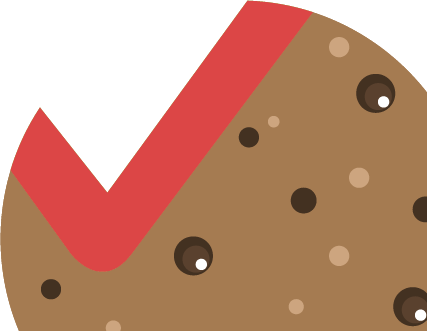Door Knobs Repair Is The Next Hot Thing In Door Knobs Repair

The Comprehensive Guide to Door Knob Repair: Keeping Your Home Secure and Functional
Door knobs, often considered granted, are necessary elements of home Improvement door Handle repair (14.248.84.128) availability, security, and personal privacy. When they malfunction, it can result in frustration and inconvenience, as well as possible security risks. This useful post explores the common issues that can take place with door knobs, standards on how to repair them, and the tools you may need for the job.
Comprehending Door Knob Functionality
Before diving into repair treatments, it is rewarding to comprehend how a door knob operates. A basic door knob includes numerous elements:

- Knob or Handle: The part you grip to unlock.
- Lock: A mechanism that secures the door when closed.
- Spindle: A rod that connects both knobs and permits them to turn.
- Strike Plate: The metal plate on the door frame where the lock rests when the door is closed.
Understanding these elements helps in identifying common issues that may occur.
Common Door Knob Issues
Door knobs can experience a variety of problems. Here are some common issues house owners might face:
- Stuck or Jammed Door Knob: Difficulty turning the knob or it remains in a fixed position.
- Loose Knob: The knob feels shaky or detached.
- Key Won’t Turn: In the case of keyed knobs, the secret might end up being stuck or refuse to turn, preventing gain access to.
- Latch Issues: The latch might fail to retract or extend, making it impossible to close or protect the door.
- Rust or Corrosion: Metal elements might wear away, particularly in locations with high humidity.
Tools and Materials Required for Repair
Before starting any repair procedure, it’s important to have the right tools on hand. Here’s a list of frequently needed tools and materials:
- Screwdriver (flathead and Phillips)
- Wrench
- Lubricant (like WD-40 or silicone spray)
- Replacement parts (knob, latch, spindle, and so on)
- Cleaning cloth
- Shatterproof glass
Step-by-Step Repair Process
1. Detecting the Problem
Begin by examining the door knob to determine the specific problem. Is the knob loose? Is it stuck? Or is it offering you difficulty when using the key? Evaluating the issue will notify the essential actions you need to take.
2. Eliminate the Door Knob
For many issues, you will need to get rid of the door knob:
- Find the screws that hold the knob in location. They are typically found on the side of the knob or on the plate.
- Use the suitable screwdriver to remove the screws.
- When unscrewed, pull the knob apart carefully, revealing the linking elements.
3. Examine for Damage
After eliminating the knob, check all elements for wear and tear. Try to find:
- Loose or worn screws
- A broken spindle
- A faulty lock mechanism
If any piece is harmed beyond repair, it might require replacing.
4. Repair the Components
Depending on your diagnosis, take the following actions:
- For a Stuck Knob: Clean the knob and lock mechanism with a cloth to get rid of any debris. Apply a lubricant to the moving parts.
- For a Loose Knob: Tighten the screws that hold the knob in location. If they are stripped, think about changing the screws or utilizing toothpicks to reinforce the holes.
- For Key Issues: Lubricate the keyhole, and gently wiggle the key to free it up. If the secret is harmed, a duplicate might be needed or you may need to replace the whole lock mechanism.
5. Reassemble the Knob
After finishing the needed repairs, reassemble the knob:
- Align the knobs or handles together.
- Secure them with screws, making certain they are tightened effectively.
- Place the lock mechanism back into the door, if eliminated.
6. Check the Door Knob
After assembly, test the door knob to ensure it operates efficiently. Examine that it locks and opens properly, and make sure the lock extends and pulls back totally.
Preserving Your Door Knob
Preventative maintenance is crucial to lengthening the life expectancy of your door knob. Here are some tips to consider:
- Regularly apply lube to moving parts.
- Tidy knobs with moderate soapy water to get rid of grime.
- Check knobs occasionally for signs of wear.
Door knob repair may appear complicated, however it is a workable job with the right tools and instructions. By familiarizing oneself with how door knobs work and knowing how to repair common issues, property owners can save time and cash while guaranteeing their doors stay functional and safe and secure. When in doubt or in cases of complicated lock systems, consulting a professional is constantly suggested.
FAQs About Door Knob Repair
Q1: How frequently should I lube my door knobs?
A: It is suggested to lube your door knobs a minimum of as soon as or two times a year to guarantee they run efficiently.
Q2: What should I do if my secret is stuck in the door lock?
A: Do not force the crucial! Instead, try carefully wiggling it while using some lube. If that doesn’t work, it may be time to consult a locksmith professional.
Q3: Can I repair a broken door knob without changing it?
A: Many small issues can be repaired with basic adjustments or replacements of small parts. Nevertheless, if there is considerable damage, changing the knob might be essential.
Q4: When should I call a professional for door knob repair?
A: If you’re not comfortable with the repair procedure, or if the breakdown includes an intricate locking mechanism, it’s best to call a locksmith professional or a professional handyman.
Using this guide, homeowners can confidently approach door knob repair, maintaining a secure and functional entryway in their homes.


